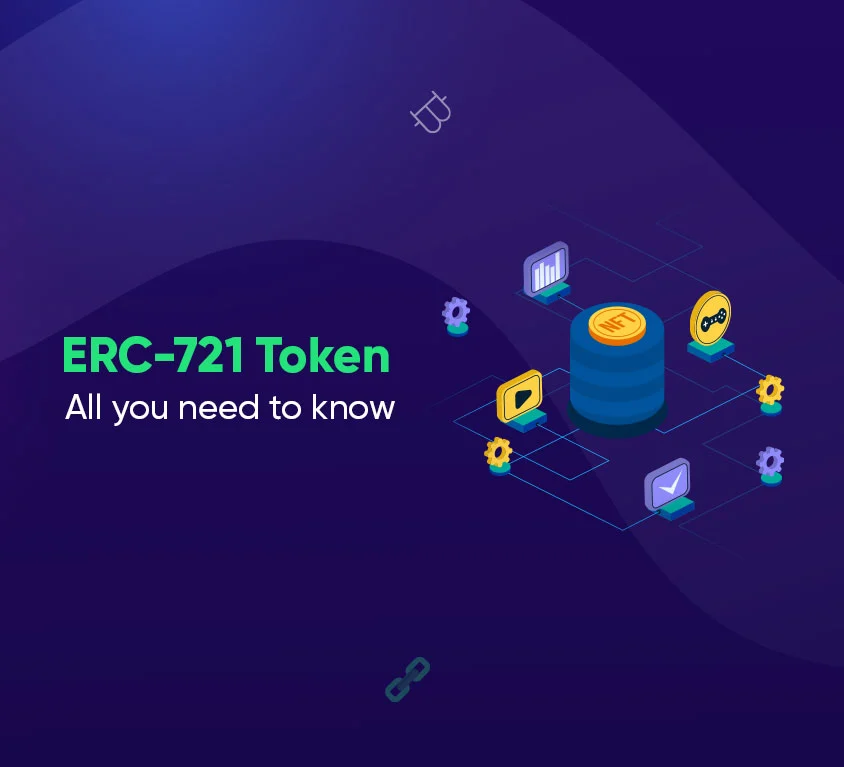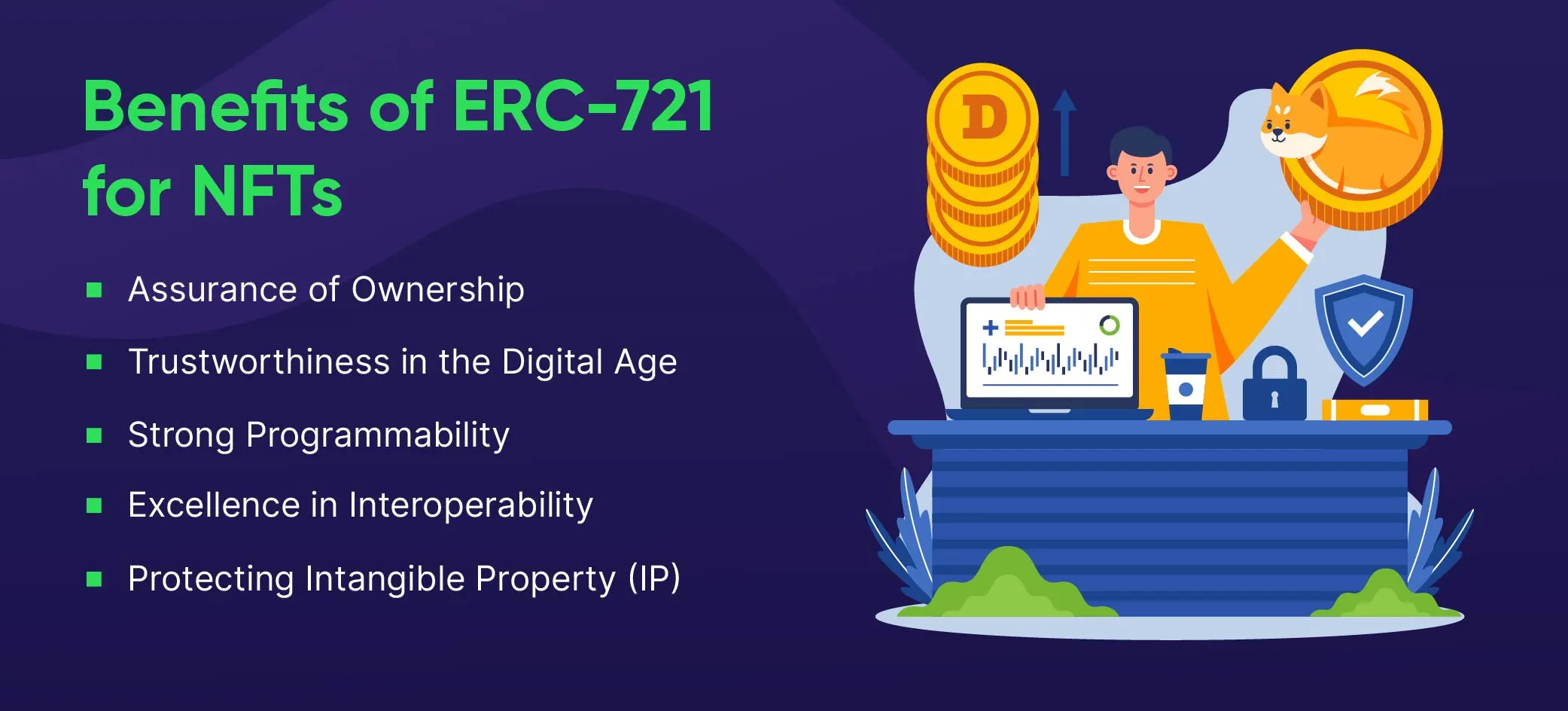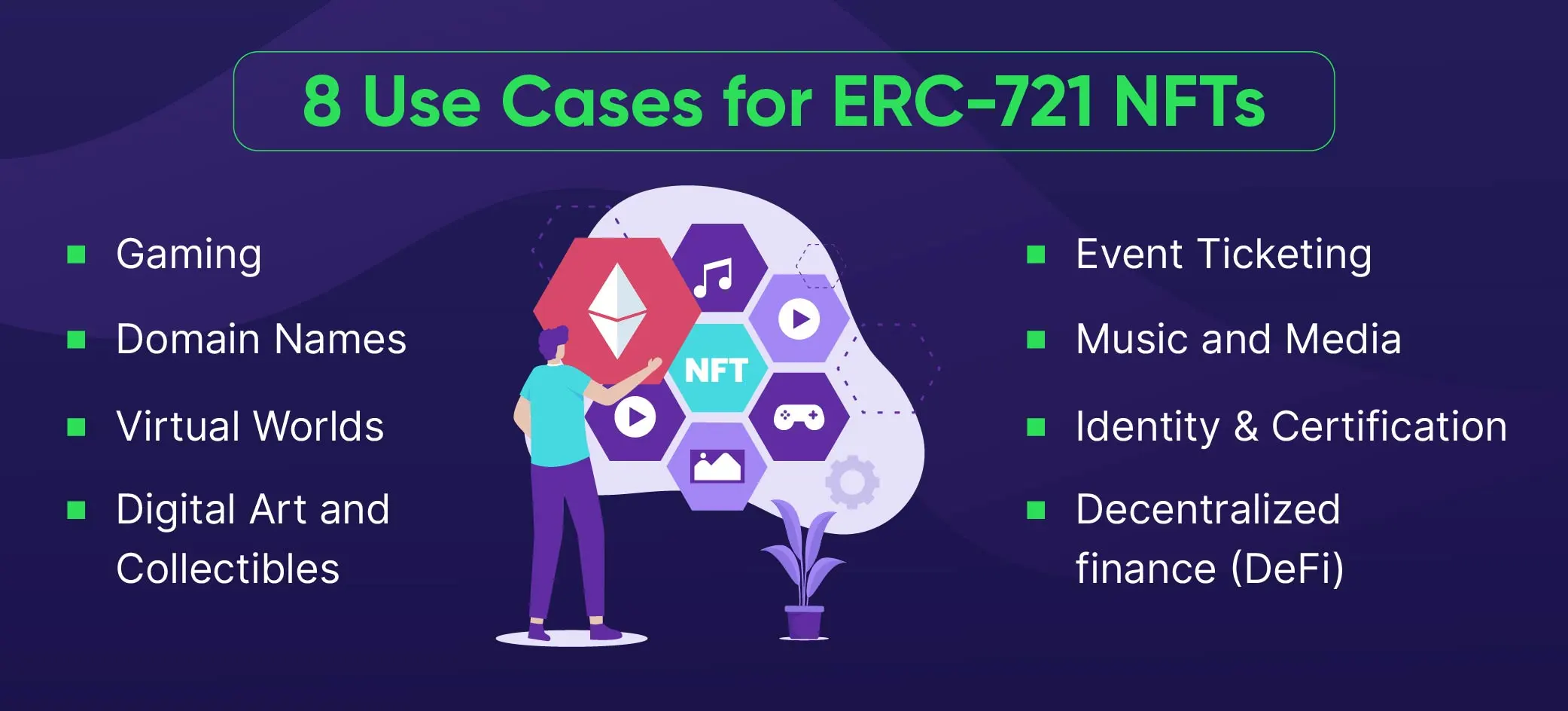
Introduction
Blockchain & Web3 Services Trusted By Leaders
- Develop innovative solutions using our state-of-the-art blockchain expertise.
- Achieve accelerated growth with robust & scalable Web3 consulting.
- Unlock 360-degree security with our top-rated blockchain development.
Erc-721 Token: All You Need to Know
ERC-721’s significance has grown rapidly. because of the NFTs’ popularity in many different industries. On the other hand, as Web 3 has gained popularity, so have its uses for non-fungible tokens or NFTs, the ERC-721 smart contract standard. We’ve talked about ERC 20 token development to create fungible tokens, but what if not every token is the same? This occurs in contexts such as real estate or collectibles, where certain objects have a higher value than others because of their utility, scarcity, etc. We’ll explain all you need to know about the ERC-721 token standard in this blog post. We will go over the definition of the ERC-721 token, How it works, its use cases, and how to create one for yourself. Now let’s get started. Here is a little overview of NFT. A Non-Fungible Token (NFT) is a special method of identifying an object or a person. The use of this kind of token is ideal for websites that sell lottery tickets, collectible goods, access keys, numbered seats for events like concerts and sporting events, etc. Because of the incredible potential of this unique kind of token, it warrants a proper standard, which is why the ERC-721 was created!What is ERC-721?
How Does the ERC-721 Token Standard Work?
The Ethereum blockchain standard, ERC-721 token, is a protocol that enables the creation and management of unique non-fungible tokens (NFTs). It consists of several key functionalities, including;- Token creation
- Ownership mapping
- Metadata inclusion
- Secure token transfers
- Event emission
- Total supply and balances
- Approval mechanisms
Benefits of ERC-721 Token for NFTs
The ERC-721 token standard is playing its role as a catalyst that is changing the environment of Non-Fungible Tokens (NFTs) on the Ethereum blockchain. It is bringing a plethora of advantages for holders. A thorough examination of ERC-721’s benefits demonstrates how revolutionary it is in terms of ownership, dependability, programmability, interoperability, and intellectual property protection.
1. Assurance of Ownership
Users can safely possess, move, and oversee distinct digital assets thanks to ERC-721. The ownership experience is stored safely in the holder’s ERC-721 wallet and is transparent and verifiable.
2. Trustworthiness in the Digital Age
ERC-721 tokens’ inherent uniqueness adds to their long-term worth. ERC-721 is a dependable standard that thrives in the market and generates long-term value for holders in the fast-paced world of NFTs.
3. Strong Programmability
The programmability of ERC-721 allows creators to add new features to their NFTs. This promotes a dynamic and varied NFT ecosystem by incorporating cutting-edge features like in-game utilities, changing attributes, and royalties for artists.
4. Excellence in Interoperability
ERC-721 guarantees smooth communication between NFTs and different Ethereum-based wallets, marketplaces, and decentralized apps (dApps). NFTs are now more useful and accessible within the Ethereum network thanks to this interoperability, which also makes them more adaptable tools for users.
5. Protecting Intangible Property (IP)
By acting as a barrier against intellectual property, ERC-721 gives creators and artists an unchangeable record of their creations. This ensures that original works are protected and that creators maintain control by providing a way to monitor the use and resale of intellectual property.
Top 8 Use Cases for ERC-721 NFTs
After reviewing the fundamentals of the ERC-721 standard, let’s examine its numerous applications and use cases in the context of Web3 and blockchain technology.
1. Gaming
In blockchain gaming, where each in-game asset is distinct and can be purchased, sold, or traded by players, ERC-721 tokens are frequently used. Axie Infinity and Gods Unchained are two examples.
2. Digital Art and Collectibles
By giving artists a means of generating revenue from their creations through exclusive tokens, NFTs have completely transformed the digital art sector. Artists can use the ERC-721 standard to create and sell their artwork as NFTs through platforms such as OpenSea, Rarible, and Art Blocks.
3. Virtual Worlds
In virtual worlds such as Decentraland and The Sandbox, land parcels, buildings, and other assets are represented by ERC-721 tokens. These assets are available for purchase, sale, and trade on public markets.
4. Domain Names
To enable users to have decentralized and censorship-resistant domain names, projects such as Unstoppable Domains and the Ethereum Name Service (ENS) use ERC-721 tokens to represent domain names on the blockchain. ERC-721 tokens are also used by social media platforms like Lens Protocol for usernames on the protocol.
5. Event Ticketing
With ERC-721 tokens, you can make exclusive tickets for events like sporting events, conferences, and concerts. Because each ticket is represented by a distinct token, it is safe and simple for users to transfer between them.
6. Music and Media
By tokenizing their work with ERC-721 tokens, musicians and other content producers enable fans to buy and possess exclusive items like limited edition records, videos, or merchandise. They can use websites like EVEN to accomplish this as well.
7. Identity and Certification
ERC-721 tokens allow for the safe and unalterable storage of crucial credentials on the blockchain. They can be used to represent digital identities, professional licenses, or educational certificates.
8. Decentralized finance (DeFi)
Tokenized bonds, insurance policies, and real estate are just a few examples of the special financial instruments that can be made with ERC-721 tokens in the DeFi world. This allows for more flexibility and innovation in the financial sector.
How to Create an ERC-721 NFT Smart Contract?
Developing an ERC-721 NFT smart contract using solidity could be a difficult task. But, luckily in 2024 various developer tools have been released to make smart contracts development easier. Moreover, writing, testing, and implementing a smart contract using the Solidity programming language is usually necessary to create an ERC-721 NFT. In this section, we have provided the necessary information for developers along with code snippets and steps for creating an ERC-721 NFT smart contract;Step 1
- Determine the use case and goal of the token by deciding why and for what purpose you want to create the ERC-721 token.
- Decide the token’s attributes, including its name, symbol, and any extra metadata.
- Establish the number of tokens that will be available and the ownership structure for the tokens.
Step 2
- Install the required libraries and set up the development environment by installing Node.js, the Solidity compiler, and any other necessary dependencies to set up your development environment.
- Make sure your project has a new directory and that it has all the required setups.
Step 3
- Compose an ERC-721 Token Smart Contract.
- Create a new file (MyERC721 Token.sol, for example) and define the contract in it.
- Bring necessary libraries, such as the ERC-721 interface and any other pertinent ones.
- Inherit from the ERC721 interface and declare the contract.
- Write the functions for managing metadata, transferring, and minting tokens.
Step 4
- To convert your contract into bytecode and ABI (Application Binary Interface), use the Solidity compiler.
- Use a development tool like Truffle and deploy the compiled contract to the Ethereum mainnet or a test network.
Step 5
- Investigate and Troubleshoot to Create unit tests for the contract ERC-721.
- Make test scripts to ensure that your contract works as intended, minting and transferring tokens.
Step 6
- For front-end integration, create an interface that allows users to interact with the token.
- Link the front end and the deployed smart contract for this use libraries such as Web3.js or ethers.js.
Step 7
- Conduct a security audit to find any weaknesses in the code of your smart contract.
- To reduce possible risks, use best practices like input validation, access controls, and secure contract design.
- Examine the smart contract code for vulnerabilities. To make sure the contract is secure, work with qualified auditors or make use of automated security analysis tools.
Step 8
- Make sure your ERC-721 token is fully tested and reviewed before releasing it onto the Ethereum mainnet.
- Before launching your ERC-721 token on the Ethereum mainnet, conduct extensive testing and review.
- Launch the Ethereum mainnet’s ERC-721 token
- Make any required revisions after keeping an eye out for any new information or possible problems.